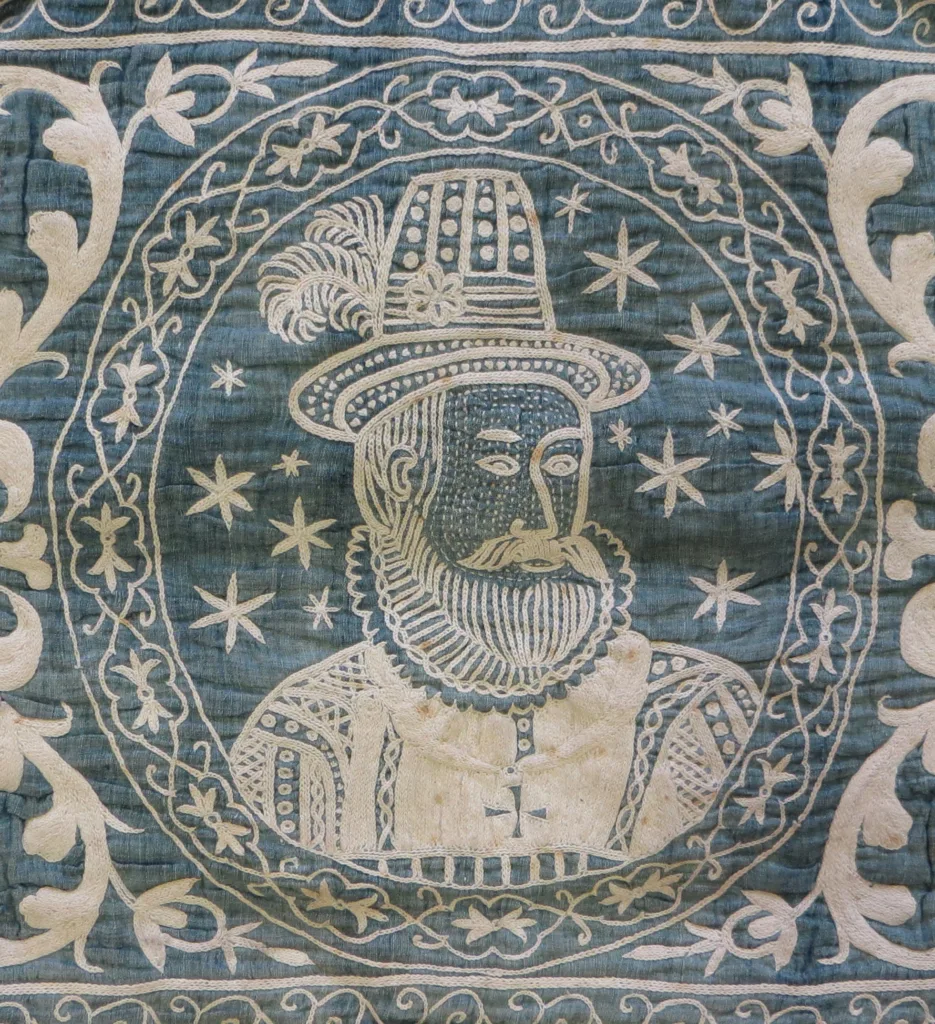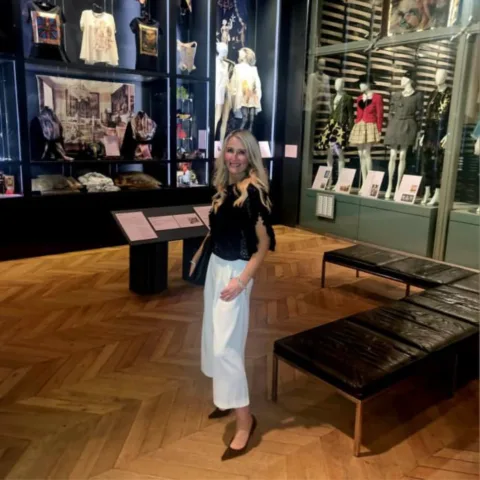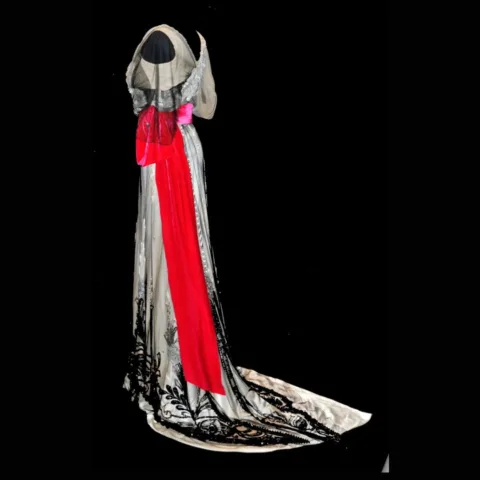The Bowes Museum Blog

Bengali Bedhangings & Portuguese Portraits

A fourteen piece embroidered bed set of Indo-Portuguese provenance was recently brought into the conservation studio to be prepared for photography. Once unpacked it was clear that their current storage was no longer providing adequate support and needed to be re-designed for the long term preservation of the hangings.
The bed hangings c.1600, are of high importance to the Bowes Museum as they were bought for the collection by the founder John Bowes in the late 19th Century and are an interesting example of 17th Century Indian embroidery modified for the European market. The hangings were originally bought attached to what was believed to be a 16th Century four poster bed but which was later found to be a 19th Century reproduction.

An undated photograph of the 19th century bed and Indo-Portuguese bed hangings when previously on display in the Bowes Museum.
They are thought to be made of at least three separate 17th Century Indian embroideries which have been pieced together into their current format at some point before they entered the museum collection. Two of the embroideries used are yellow raw (tussah) silk thread on a cream cotton or silk ground. The third embroidery is cream cotton thread on a dyed indigo ground, which have beautifully detailed portraits of figures in late 16th century costume.

The shaped bed-head cover from the set. The indigo embroidery motifs have been stitched on to the yellow and cream embroidery
Unfortunately the bed hangings are in poor condition with evidence of light and water damage which has caused discolouration and loss of many of the embroidery threads. One piece of the bed set is a coverlet with bolster shape which is in particularly bad condition with tideline staining, heavy surface soiling and a great deal of the embroidery has been lost.
The image below shows the dramatic difference in the condition of the coverlet where a curved panel was unpicked during the 1970’s compared to the silk which was left exposed. This highlights the importance of having low light levels and rotating objects on long-term display.
All pieces of the bed set were re-packed but the coverlet was the most challenging due to its size, unusual shape and poor condition. There was limited space for storage and a limited amount of conservation grade materials available.
Firstly we made a cylindrical cushion of polyester wadding, polyester felt and an outer layer of cotton calico to maintain the three-dimensional bolster shape. Two narrower rolls were made to further hold out the shape and fill any fold lines. If a textile object is stored for a long period of time with sharp folds or creases, the ongoing strain to the textile fibres along the fold can cause permanent distortion or even breakages.
The main body of the coverlet was interleaved with acid-free tissue and rolled inwards towards the bolster. The decision was made to fold the plain cotton side tabs inwards during rolling to reduce the final length. Although this was not ideal, the coverlet was almost three metres wide and otherwise would not fit on the store room shelves.
Once we had the new storage dimensions, a Correx® (corrugated polyethylene) box was custom-made to house the coverlet. A fitted Tyvek® (semi-permeable non-woven polyethylene fabric) lid was tied on with cotton tapes to keep out dust and reduce extra weight to the large box. Finally, a label and packing instructions were attached to the outside of the box for future use.
The full bed set is now back in store but three of the pieces have been selected for the Fashion and Textile Gallery re-display in 2018, including the headboard cover shown above, and two of the valances, and will come back into the conservation studio to be treated and mounted for display.
For other examples of Indian embroideries, check out the upcoming V&A exhibition ‘The Fabric of India’ opening in October 2015. https://www.vam.ac.uk/content/exhibitions/the-fabric-of-india/
By Emily Austin, Icon Textile Conservation Intern














